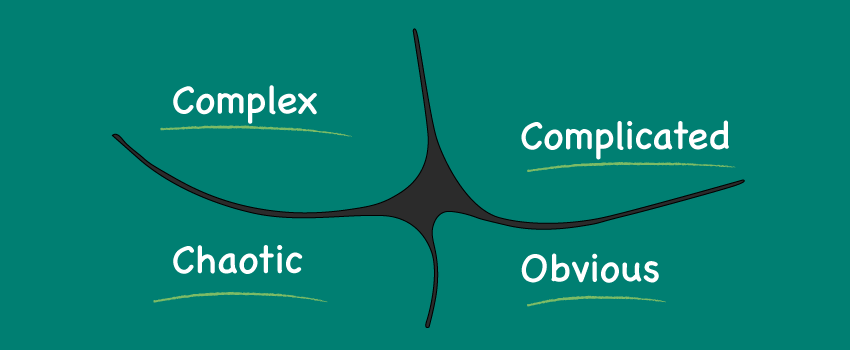
4 Tips on Using Service Level Management to Build Better Relationships
Service level management is one of the most important and necessary capabilities within IT service management (ITSM) but I’m going to stick my neck out to say that not enough IT organizations get it exactly right.
You see, effective service level management can actually assist your IT organization in building stronger relationships between you and your customers. Why? Because service level management is all about delivering services that provide value.
Before I get to my four tips, let’s get on the same page as to what service level management is.
What’s service level management?
To get us started here’s the official ITIL v3 definition:
“The process responsible for negotiating achievable service level agreements (SLAs) and ensuring that these are met. It is responsible for ensuring that all IT service management processes, operational level agreements and underpinning contracts are appropriate for the agreed service level targets. Service level management monitors and reports on service levels, holds regular service reviews with customers, and identifies required improvements.”
Whereas the very-new ITIL 4 offers up a purpose statement (and please note the ITIL 4 move from processes to practices):
“The purpose of the service level management practice is to set clear business-based targets for service levels, and to ensure that delivery of services is properly assessed, monitored, and managed against these targets.”
Most people will understand the importance of having, and reporting on, SLAs but hopefully, you can see that service level management covers so much more. However, often these other elements get left by the wayside.
So, if your organization is struggling with crumbling customer relationships, harboring a blame culture during service failures, or simply looking to improve how it delivers its services, here are four ways in which you can better use service level management to help.
1) Involve your customer
Effective service level management requires discussions, agreements, and understanding between parties. To quote the above ITIL 4 definition, its purpose is, “…to set clear business-based targets for service levels.” Now, these discussions and negotiations cannot be effective in doing this if you don’t truly involve your customer. It might sound pretty basic, even obvious, but it’s funny how often the “easy” stuff tends to get overlooked.
So, involve your customer in your processes from the start. Listen to their wants and needs and share what you can offer and consider your technical and resource restrictions. Importantly, don’t promise what you can’t deliver, let them negotiate with you, and ensure that each party involved really understands what has been proposed before any official agreements are made.
Too often, I’ve witnessed a service provider and customer struggle through a service failure because one party thinks one thing and the other party thinks another. You can save yourself, and your customers, a lot of time and stress by setting all of this out before any operations commence and use the time during outages to actually fix the issue.
Also, by involving your customer in the development of SLAs, contracts, and processes you’ll make them feel heard and valued, which will likely enhance the level of trust they have for your IT organization and its ability to deliver.
Blog: 5 tips for better SLAs2) Make it easy for your customer to offer feedback
If your customer has a complaint you need to listen – complaints shouldn’t be viewed negatively, instead look at them as a learning opportunity. If you feel that the complaint is unjust, then it’s a good idea to get around a table and talk about it. Having a complaints procedure in place can also help to deter potentially meaningless, off-the-cuff complaints, and it also shows your customers that you’re serious about doing what’s best for them.
When your organization is delivering services well and meeting expectations, it’s likely that you won’t hear anything – people are often quick to complain but don’t generally compliment you for “keeping the lights on.” This is one reason why it’s important to hold regular service level management reviews where you can catch-up with your customers about your service delivery.
This isn’t the same as an annual review meeting to discuss the current agreements in place (although these are of course essential too) but regular meetings to see whether expectations are being met. Such regular reviews and a robust complaints procedure will again show your customers that you’re serious about meeting their needs which can only help to strengthen your relationship.
If your org is harboring a blame culture during service failures, or simply looking to improve how it delivers its services, here are four ways in which you can better use service level management to help. #ITSM Click To Tweet3) Make responsibilities clear
Define who is responsible for what from the get-go. This is the best way to prevent any arguments later down the line – which is good because these arguments, however small, can threaten your relationship with your customer (particularly if they happen regularly).
A lot of responsibility will fall on your shoulders as the service provider, but this doesn’t mean the customer won’t be responsible for anything at all. For example, let’s say your IT organization provides a service to a customer and details any and all limitations of that service. It’s up to the customer to work within those limitations as they agreed to them. If they were to ignore these and experience degradation or service failures then you, as the provider, should not be expected to handle that under a priority 1 SLA, or include it in your outage reports as a failure of service.
When talking about responsibilities in any ITSM practice most people will immediately talk to a RACI matrix which stands for, “Responsible, Accountable, Consulted, and Informed.” And I’m afraid I’m no different, but that’s because a RACI matrix is an incredibly useful tool and will make your life easier.
Having a documented chart to highlight where responsibility lies allows all parties to understand the expectations of them and others, and makes it difficult for anybody to argue against it during a crisis.
Blog: How to deal with and recognise watermelon SLAs4) Don’t neglect your operational level agreements (OLAs)
In my experience, this is where many IT organizations fail with their service level management efforts – either their OLAs doesn’t make any sense in relation to the SLAs in place or they don’t even exist at all.
While an SLA is an agreement that your organization has with its customer. An OLA is, in the words of ITIL v3 (as I’ve not seen them mentioned in ITIL 4 yet), “an agreement between an IT service provider and another part of the same organization.” The most common – and easiest – example to provide is an agreement between the IT service desk and a support group who work to resolve an incident within the agreed timescale.
One of the worst cases I’ve witnessed where OLAs made no sense was actually for a large corporation, which is perhaps what surprised me the most (I incorrectly assumed their service level management would be tip-top). The agreed SLA for a priority 1 incident was four hours, but the OLAs in place for each support team was also four hours. This meant that the actual SLA of four hours was often exceeded but each support team had adhered to the agreed OLA. I’ll let you imagine how well that went down with the customer each time there was a service failure to deal with.
The point I’m making is that although your SLAs are incredibly important, they’ll mean nothing without OLAs in place that support them.
By involving your customer in the development of SLAs, contracts, and processes you’ll make them feel heard and valued - @Joe_the_IT_Guy #servicedesk Click To TweetHigh levels of SLA failure are a sure-fire way to upset your customer and knock their faith in you which, once damaged, can be very hard to regain. Hopefully, my four tips will help.
Has your organization got an exceptional service level management capability in place? If so, what other tips would you offer to companies looking to improve their customer relationships? Please let me know in the comments.






